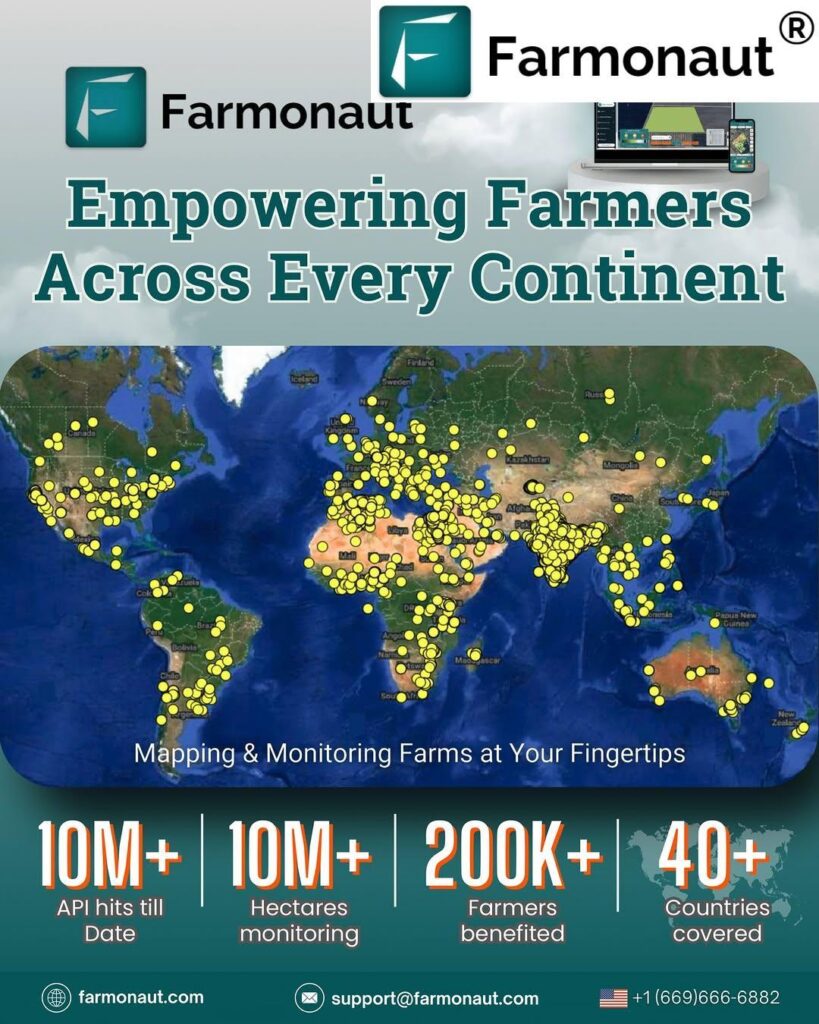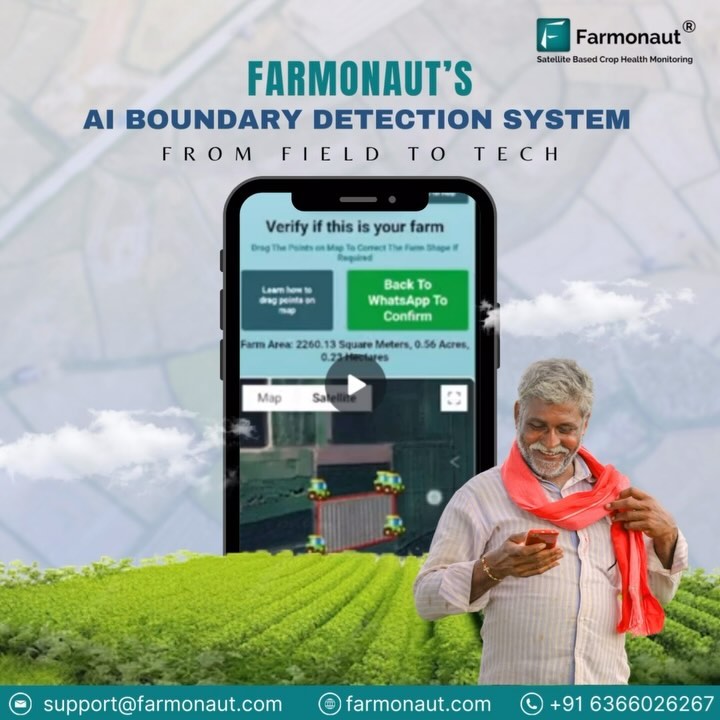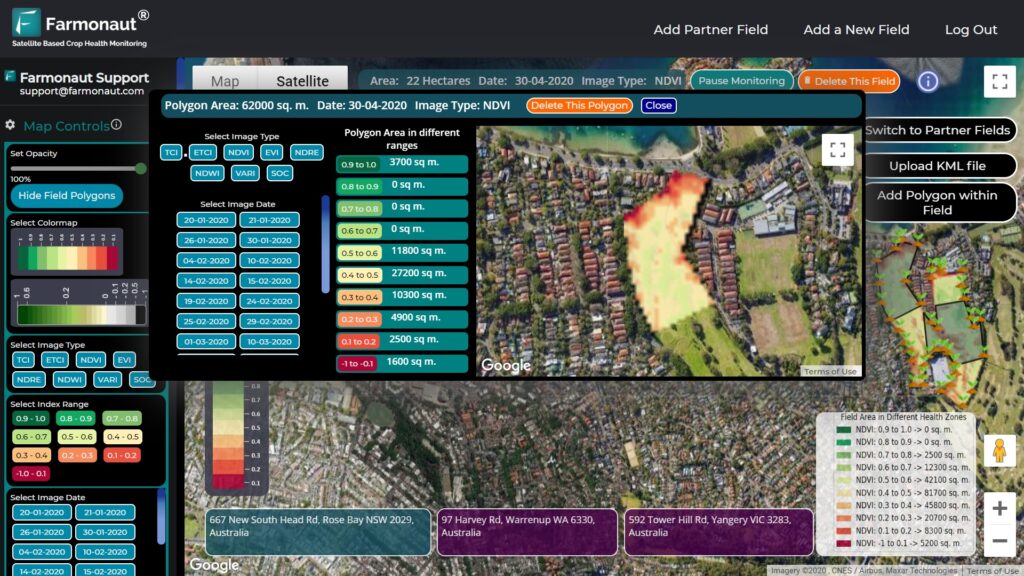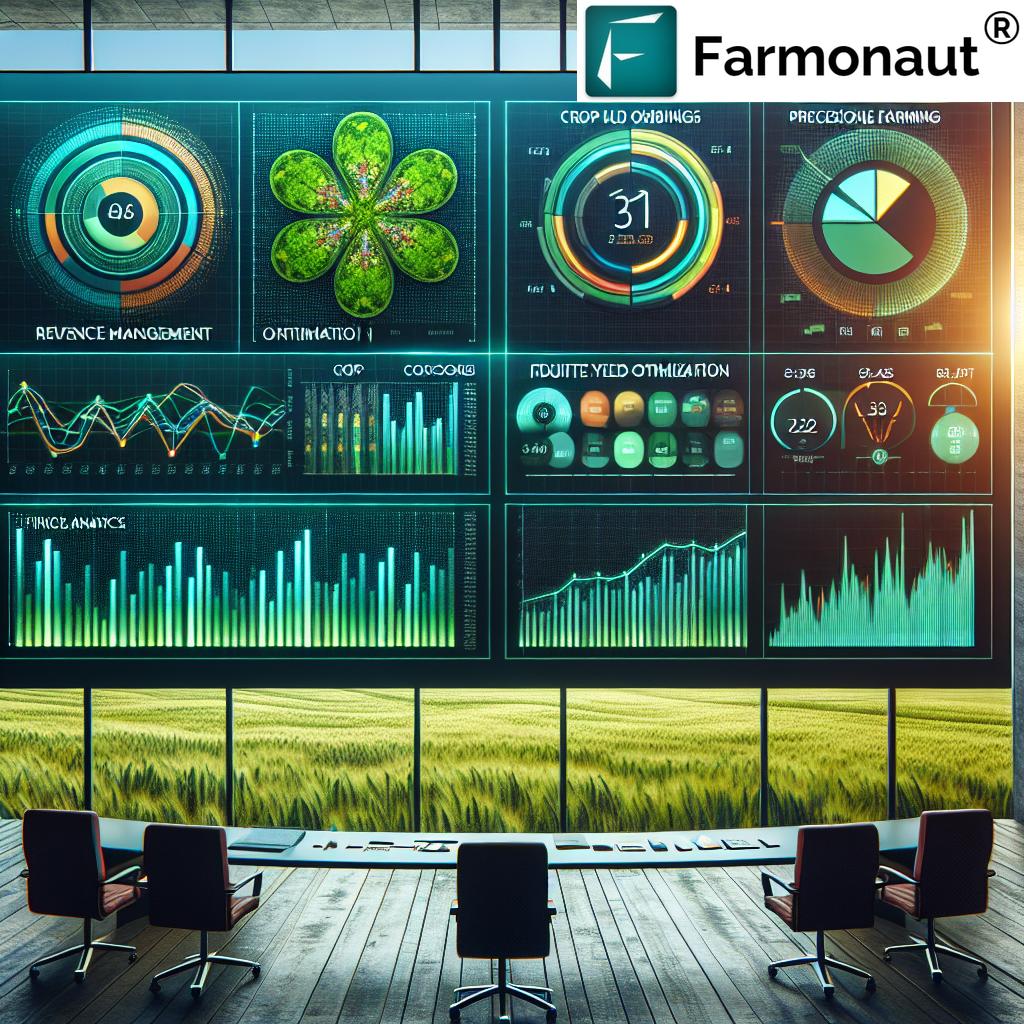Revolutionizing Precision Agriculture: How Drone Technology is Transforming Land Surveys and Aerial Data Collection
“The drone surveying market is projected to grow at a CAGR of 19.3% from 2023 to 2033.”
In recent years, we’ve witnessed a remarkable transformation in the field of agriculture and land management, driven by the rapid advancement of drone technology. This revolution is reshaping how we approach precision agriculture, land surveys, and aerial data collection. As we delve into this exciting topic, we’ll explore how drones are becoming indispensable tools for farmers, surveyors, and land developers alike.
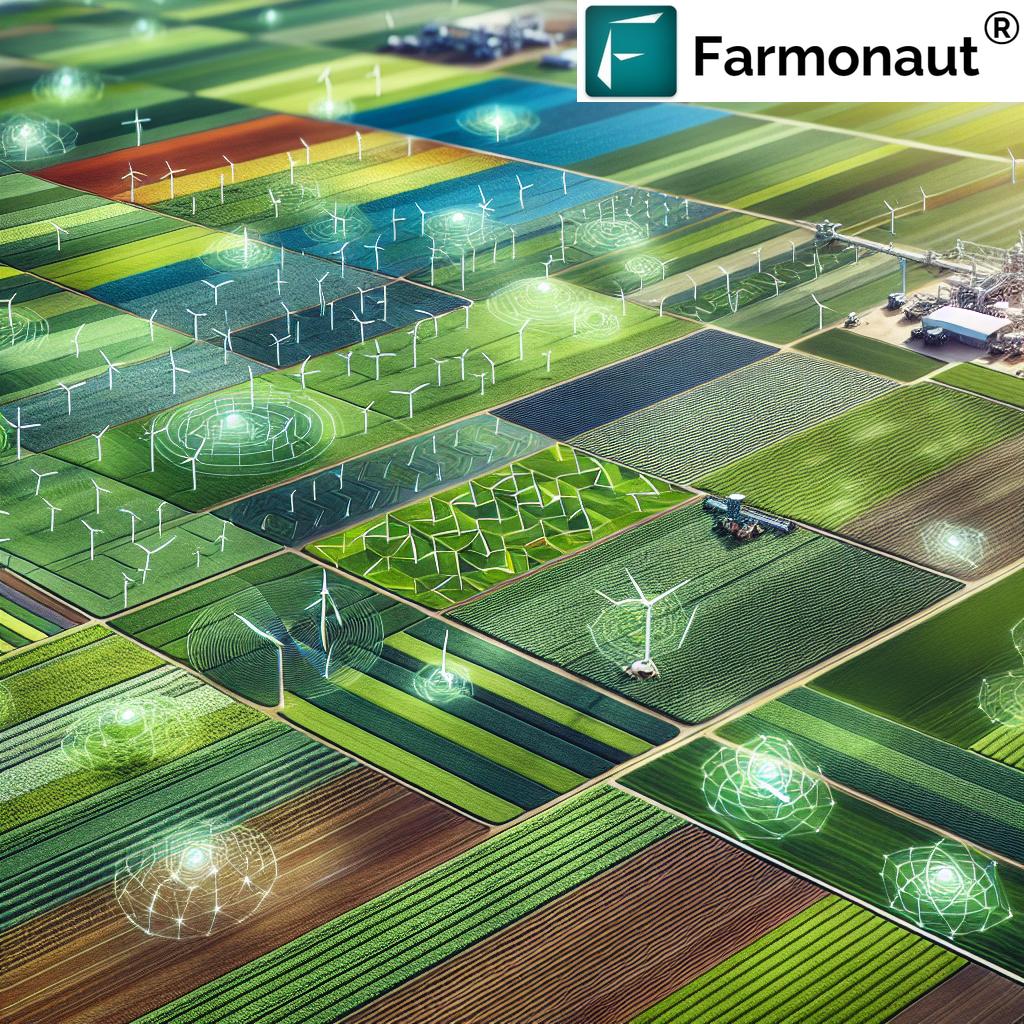
The Rise of Drone Surveying in Agriculture
The integration of drones into agriculture has ushered in a new era of precision farming. These aerial marvels provide farmers with unprecedented insights into their crops and land, enabling them to make data-driven decisions that optimize yield and resource management. Let’s explore how drone technology is revolutionizing various aspects of agriculture:
- Crop Health Monitoring: Drones equipped with multispectral and thermal cameras can detect early signs of pest infestations, diseases, or nutrient deficiencies, allowing farmers to take prompt action.
- Irrigation Management: By capturing detailed imagery of soil moisture levels, drones help farmers optimize their irrigation strategies, conserving water and improving crop health.
- Yield Prediction: Advanced analytics applied to drone-collected data can provide accurate yield estimates, helping farmers and agribusinesses plan for harvest and market demands.
- Precision Spraying: Drones can apply fertilizers and pesticides with pinpoint accuracy, reducing chemical usage and minimizing environmental impact.
For those interested in leveraging satellite technology for agricultural insights, Farmonaut’s platform offers comprehensive solutions for crop monitoring and management.
Urban Planning and Infrastructure Development
“Urban planning, precision agriculture, and land development are key sectors embracing drone-based surveying solutions.”
The applications of drone technology extend far beyond the farm, playing a crucial role in urban planning and infrastructure development. Here’s how drones are transforming these sectors:
- 3D Mapping: Drones can create detailed 3D models of urban areas, aiding in city planning and development projects.
- Infrastructure Inspection: From bridges to power lines, drones provide a safe and efficient means of inspecting critical infrastructure.
- Construction Monitoring: Real-time aerial imagery helps project managers track progress and identify potential issues early in the construction process.
- Environmental Impact Assessment: Drones assist in evaluating the environmental consequences of urban development, ensuring sustainable growth.
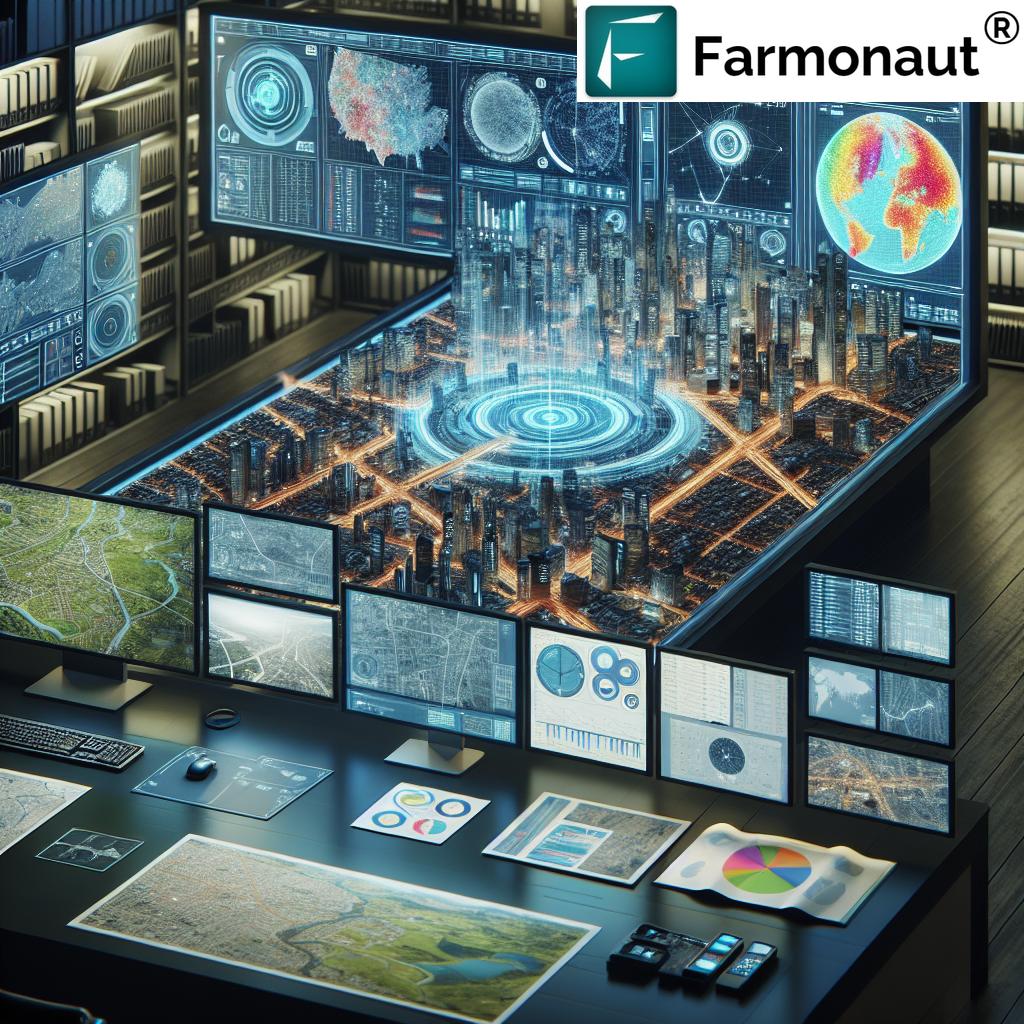
The Advantages of Drone Surveying Over Traditional Methods
Drone technology offers numerous benefits compared to conventional surveying techniques:
- Time Efficiency: Drones can survey large areas in a fraction of the time required by ground-based methods.
- Cost-Effectiveness: Reduced labor and equipment needs translate to lower overall costs for surveying projects.
- Improved Accuracy: High-resolution sensors and advanced data processing techniques yield highly accurate results.
- Safety: Drones can access hazardous or hard-to-reach areas without putting surveyors at risk.
- Data Richness: The variety of sensors available for drones provides a wealth of data types, from visual imagery to thermal and multispectral information.
For businesses looking to optimize their operations through advanced monitoring solutions, Farmonaut’s fleet management services offer cutting-edge tools for efficient resource allocation and tracking.
Emerging Trends in Drone Surveying Technology
As the drone industry continues to evolve, several exciting trends are shaping the future of surveying and data collection:
- AI and Machine Learning Integration: Advanced algorithms are enhancing data analysis capabilities, automating feature detection and classification.
- LIDAR Technology: Light Detection and Ranging (LIDAR) sensors are becoming more compact and affordable, enabling highly detailed 3D mapping.
- Autonomous Flight Capabilities: Improvements in autonomous navigation allow for more efficient and safer survey missions.
- Real-Time Data Processing: On-board processing units are enabling instant data analysis and decision-making in the field.
- Extended Flight Times: Advancements in battery technology and drone design are increasing flight durations, allowing for more extensive surveys.
Drone-as-a-Service (DaaS): A Game-Changer for Businesses
The emergence of Drone-as-a-Service (DaaS) models is democratizing access to advanced surveying technology. This innovative approach offers several advantages:
- Reduced Capital Expenditure: Businesses can access cutting-edge drone technology without significant upfront investments.
- Expertise on Demand: DaaS providers offer skilled pilots and data analysts, ensuring high-quality results.
- Scalability: Services can be easily scaled up or down based on project requirements.
- Regulatory Compliance: DaaS companies handle the complexities of drone regulations and licensing.
- Continuous Technology Updates: Clients benefit from the latest drone advancements without needing to upgrade their own equipment.
For those interested in leveraging satellite-based solutions for agricultural finance, Farmonaut’s crop loan and insurance services provide innovative tools for risk assessment and management.
The Impact of Drone Surveying on Various Industries
| Industry | Estimated Market Size (2023) | Projected CAGR (2023-2033) | Key Benefits |
|---|---|---|---|
| Precision Agriculture | $3.5 billion | 22% | Crop health monitoring, yield optimization, resource efficiency |
| Urban Planning | $2.1 billion | 18% | 3D mapping, infrastructure inspection, environmental assessment |
| Mining | $1.8 billion | 20% | Stockpile measurement, site safety, exploration support |
| Infrastructure Development | $2.7 billion | 19% | Construction monitoring, asset inspection, project planning |
This table illustrates the significant growth potential and diverse applications of drone surveying across key industries. The high projected CAGR across all sectors underscores the increasing adoption and value of drone technology in various fields.
Challenges and Considerations in Drone Surveying
While the benefits of drone surveying are substantial, there are several challenges that the industry must address:
- Regulatory Compliance: Navigating the complex landscape of drone regulations and obtaining necessary permits can be challenging.
- Data Security: Ensuring the privacy and security of collected data is crucial, especially when surveying sensitive areas.
- Weather Limitations: Adverse weather conditions can impact drone performance and data quality.
- Battery Life: Despite improvements, limited flight times can still pose challenges for large-scale surveys.
- Public Perception: Addressing concerns about privacy and safety is essential for widespread acceptance of drone technology.
For businesses looking to enhance their sustainability efforts, Farmonaut’s carbon footprinting solutions offer valuable insights into environmental impact and mitigation strategies.
The Future of Drone Surveying and Aerial Data Collection
As we look to the future, several exciting developments are on the horizon for drone surveying technology:
- 5G Integration: The rollout of 5G networks will enable real-time data transmission and processing, further enhancing the efficiency of drone surveys.
- Swarm Technology: Coordinated groups of drones working together will allow for faster and more comprehensive data collection.
- Advanced Sensors: Continued improvements in sensor technology will provide even more detailed and diverse data types.
- Edge Computing: On-board processing capabilities will continue to advance, enabling more sophisticated in-flight analysis and decision-making.
- Integration with Other Technologies: Drones will increasingly work in tandem with ground-based robots and IoT devices for comprehensive environmental monitoring.
For those interested in large-scale agricultural management, Farmonaut’s Agro Admin App provides powerful tools for overseeing extensive farming operations.
Case Studies: Successful Implementation of Drone Surveying
Let’s examine some real-world examples of how drone surveying has made a significant impact:
- Precision Agriculture in California: A large vineyard implemented drone surveying to optimize irrigation, resulting in a 20% reduction in water usage and a 15% increase in crop yield.
- Urban Planning in Singapore: Drones were used to create detailed 3D models of the city, facilitating more efficient urban development planning and reducing project timelines by 30%.
- Mining Operations in Australia: A major mining company adopted drone surveying for stockpile measurement, improving accuracy by 95% and reducing survey time by 80%.
- Infrastructure Inspection in Germany: Drones were employed to inspect wind turbines, reducing inspection time by 50% and significantly improving worker safety.
The Role of AI and Machine Learning in Drone Surveying
Artificial Intelligence (AI) and Machine Learning (ML) are playing an increasingly crucial role in enhancing the capabilities of drone surveying:
- Automated Flight Planning: AI algorithms can optimize flight paths for maximum coverage and efficiency.
- Object Detection and Classification: ML models can identify and categorize features in aerial imagery with high accuracy.
- Predictive Maintenance: AI-powered systems can predict when drones require maintenance, reducing downtime and extending equipment life.
- Data Analysis and Insights: Advanced algorithms can process vast amounts of aerial data to extract actionable insights quickly.
- Anomaly Detection: AI can identify unusual patterns or changes in surveyed areas, alerting operators to potential issues.
For businesses seeking to enhance their supply chain transparency, Farmonaut’s product traceability solutions offer cutting-edge blockchain-based tracking systems.
Environmental Benefits of Drone Surveying
The adoption of drone technology in surveying and data collection offers several environmental advantages:
- Reduced Carbon Footprint: Drones consume less energy compared to traditional surveying vehicles, lowering overall emissions.
- Minimal Disturbance to Ecosystems: Aerial surveys cause less disruption to sensitive habitats than ground-based methods.
- Efficient Resource Management: Precise data from drone surveys enables more efficient use of water, fertilizers, and pesticides in agriculture.
- Environmental Monitoring: Drones facilitate regular monitoring of protected areas, aiding in conservation efforts.
- Disaster Response: Rapid aerial surveys can assist in assessing and mitigating environmental impacts following natural disasters.
Economic Impact of the Drone Surveying Market
The rapid growth of the drone surveying market is having a significant economic impact:
- Job Creation: The industry is generating new roles for drone pilots, data analysts, and technicians.
- Cost Savings for Businesses: Efficient surveying methods lead to reduced operational costs across various sectors.
- Innovation Stimulus: The demand for advanced drone technology is driving innovation in related fields such as sensor technology and data analytics.
- Economic Efficiency: Improved data collection and analysis contribute to more informed decision-making and resource allocation.
- Export Opportunities: Countries at the forefront of drone technology can capitalize on growing global demand.
Legal and Ethical Considerations in Drone Surveying
As drone technology becomes more prevalent, it’s crucial to address the legal and ethical implications:
- Privacy Concerns: Establishing clear guidelines for data collection and usage to protect individual privacy.
- Airspace Regulations: Navigating complex airspace rules and obtaining necessary permissions for drone operations.
- Data Ownership: Clarifying who owns the data collected during surveys and how it can be used.
- Safety Standards: Implementing and adhering to strict safety protocols to prevent accidents and protect public safety.
- Ethical Use: Ensuring that drone technology is not used for surveillance or other potentially harmful purposes.
Training and Skill Development for Drone Surveying
The growing drone surveying industry creates a demand for skilled professionals. Key areas of training include:
- Drone Piloting: Mastering the operation of various drone types and understanding flight regulations.
- Data Analysis: Developing skills in interpreting aerial imagery and processing complex datasets.
- GIS and Mapping: Understanding Geographic Information Systems and creating accurate maps from drone data.
- Regulatory Compliance: Staying updated on drone laws and obtaining necessary certifications.
- Specialization: Developing expertise in specific applications such as precision agriculture or infrastructure inspection.
Conclusion: The Transformative Power of Drone Surveying
As we’ve explored throughout this article, drone technology is revolutionizing the fields of land surveying and aerial data collection. From precision agriculture to urban planning and beyond, drones are providing unprecedented levels of accuracy, efficiency, and insight. The rapid growth of the drone surveying market, with its projected CAGR of 19.3% from 2023 to 2033, underscores the transformative potential of this technology.
As the industry continues to evolve, we can expect to see even more innovative applications and advancements. The integration of AI, machine learning, and 5G technology will further enhance the capabilities of drone surveying, opening up new possibilities for businesses and researchers alike.
However, as we embrace these technological advancements, it’s crucial to address the challenges and ethical considerations that come with them. By fostering responsible development and use of drone technology, we can ensure that its benefits are maximized while minimizing potential risks.
The future of drone surveying is bright, promising to reshape how we understand and interact with our environment. As this technology continues to mature, it will play an increasingly vital role in addressing global challenges, from sustainable agriculture to urban development and environmental conservation.
For those looking to stay at the forefront of this exciting field, continuous learning and adaptation will be key. Whether you’re a farmer, urban planner, or environmental scientist, embracing drone technology can provide you with powerful tools to enhance your work and make more informed decisions.
As we conclude, it’s clear that the drone revolution in surveying and data collection is not just a passing trend, but a fundamental shift in how we observe, analyze, and manage our world. The question is no longer if drone technology will transform these fields, but how quickly and profoundly it will do so.
FAQs
- What are the main advantages of using drones for land surveying?
Drones offer increased efficiency, cost-effectiveness, improved safety, and the ability to access hard-to-reach areas compared to traditional surveying methods. - How accurate is drone surveying compared to traditional methods?
Drone surveying can be highly accurate, often achieving centimeter-level precision when using high-quality equipment and proper techniques. - What industries benefit most from drone surveying technology?
Agriculture, construction, mining, urban planning, and infrastructure inspection are among the industries that benefit significantly from drone surveying. - Are there any limitations to using drones for surveying?
Yes, limitations include weather conditions, battery life, regulatory restrictions, and the need for skilled operators and data analysts. - How does AI enhance drone surveying capabilities?
AI improves data analysis, enables automated flight planning, enhances object detection and classification, and facilitates predictive maintenance of drone equipment.
Earn With Farmonaut: Join our affiliate program and earn a 20% recurring commission by sharing your promo code and helping farmers save 10%. Onboard 10 Elite farmers monthly to earn a minimum of $148,000 annually—start now and grow your income!
For more information on how you can leverage advanced agricultural technology, visit Farmonaut’s web application or download our mobile apps:
For developers interested in integrating our technology into their own applications, check out our API and API Developer Docs.








